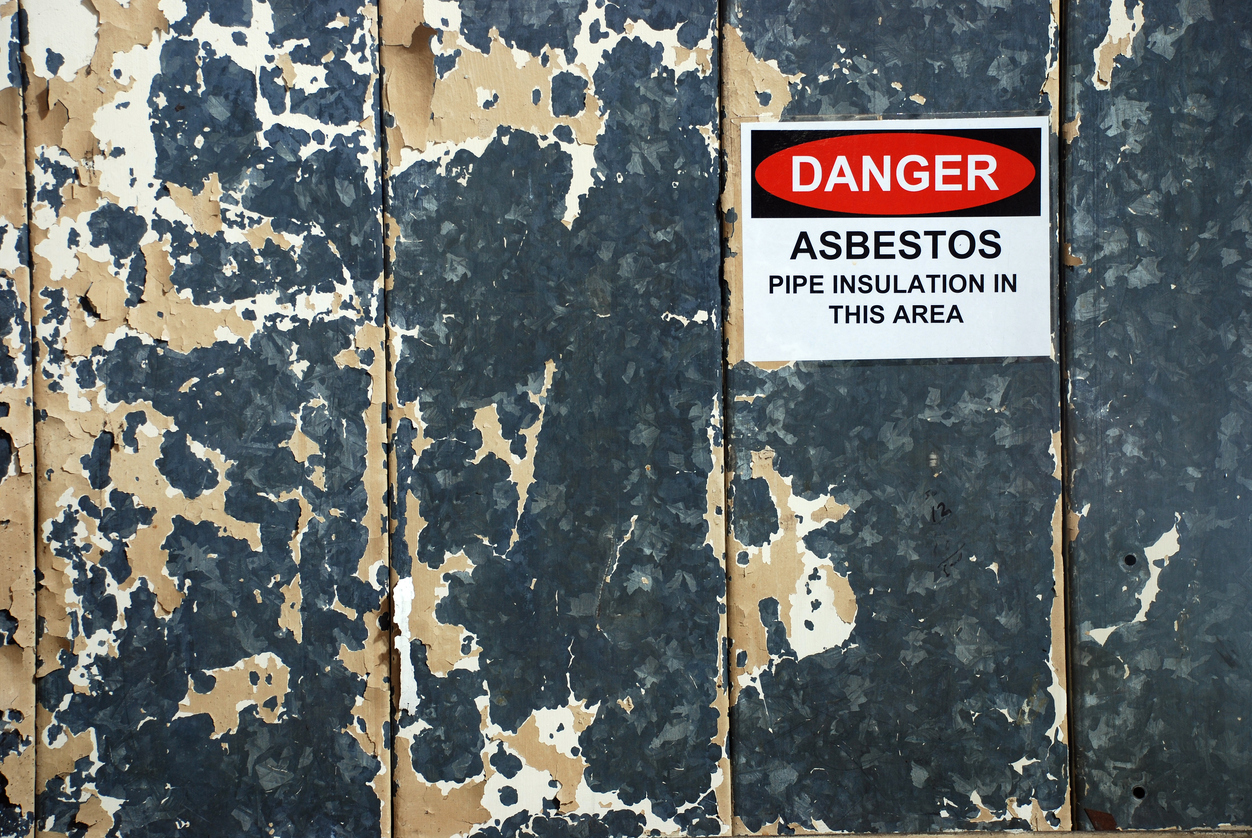Asbestos has been around for thousands of years, and given that its widespread use in the building construction industry in Britain was only prohibited in 1999, there’s still a lot of it about. Dakota Murphey has taken inspiration from commercial chartered building surveyors Bradly-Mason LLP to let you know exactly why you need an Asbestos Management Plan. This naturally occurring mineral was once hailed for its versatility. It has tensile strength, is heat resistant, and has incredible insulating properties.
Asbestos through the ages
Woven into fabric and mixed with cement, asbestos has been used for many years in home and office construction as pipe lagging, ceiling tiles made from Asbestos Insulating Board (AIB), AIB partition walls, gutters and downpipes, roofing, loose-fill insulation and even fire-proof vests.
The Egyptian pharaohs were embalmed with clothing that was woven with asbestos fibres, and the Greeks used it in the lamp wicks of the eternal flames. Tablecloths and napkins used by the early Romans were made with asbestos – they even tossed them into the fire to be cleaned! – and it’s also been found in everyday pottery, dating as far back as the Stone Age.
Asbestos mining increased dramatically during the Industrial Revolution of the late 1800s, as the demand for asbestos products grew. Shipbuilders and the railways started using large quantities of asbestos to insulate steam engines and to fire-proof sea-going vessels. Soon, the automobile industry started using it in car clutches, brakes and other friction products.
Most houses and flats built before 1980 used asbestos in their construction. It was commonly used in furnaces, floor tiles, plumbing, fireplaces and window caulking, and if any asbestos was scraped or damaged, the deadly fibres would become airborne, leaving everyone at risk.
The health dangers of asbestos
The problem with many homes and buildings is that there are often no buildings plans available, so no one knows exactly where or whether asbestos has been used extensively. Most likely it would be in floors, ceilings, walls, and insulation, which is not necessarily a problem because asbestos is only dangerous when the fibres are released into the air – for example, if a wall containing asbestos is drilled into, the fibres become airborne.
According to the most recent figures, asbestos is responsible for over 5,000 deaths every year. If asbestos fibres are inhaled, they can cause a number of deadly diseases that may only become evident years after exposure, and include
- Mesothelioma and other types of lung cancer that are nearly always fatal
- Asbestosis – scarring of the lungs that can be fatal
- Diffuse pleural thickening – thickening the membrane around the lungs that can lead to breathlessness
Today, it’s vital that companies understand their responsibilities with regard to the legal and health issues of asbestos. We know that asbestos has been used extensively in many buildings, but the problem is its fibres are microscopic and cannot be seen by the naked eye.
That said, it is crucial that the removal of asbestos is dealt with properly and carefully. In some cases, it’s actually better to leave the asbestos undisturbed, but with warnings.
Asbestos Management Plan
An Asbestos Management Plan should contain details on how asbestos should be handled and treated (if found) and should also outline the key responsibilities and roles of people within the organisation, clearly defining who should do what and when.
In addition, the Plan should describe where any asbestos is likely to be found and in what type of materials. In some cases, the action needed could be as simple as ‘leave undisturbed’. If this is the case, then safety signs should be erected stating that the material should not, under any circumstances, be disturbed.
The duties and obligations of a business owner and staff must also be outlined and should include the following points:
- Materials that may contain asbestos should be located, where possible, and their condition checked. If asbestos is exposed to constant movement which may cause asbestos fibres to become airborne, then urgent action must be taken. If the material has not been disturbed and is solid and in good condition, then a warning may be all that’s necessary.
- The location of potentially hazardous asbestos materials should be recorded – if any of these are moved around, then the tracking of their location is required.
- If your businesses premises were built before 1999, then more than likely they’ll contain some asbestos (it’s best to assume they do). The business owner should ensure that anyone who could be a risk is aware of the location and condition of all potentially dangerous materials.
Because of the serious health concerns and a growing movement away from asbestos products, finding safe, suitable alternatives has become paramount. Today, there are now a handful of these and they include thermoset plastic flour, polyurethane foam, flour fillers, amorphous silica fabric, and cellulose fibre.
Leave it to the experts
If you suspect there may be asbestos in your building, your first port of call should be the HSE website section on asbestos here.
If asbestos is present, your Asbestos Management Plan should have sufficient information so that an expert asbestos removal company can verify your findings and get to work on its safe removal.



 Bitcoin
Bitcoin  Ethereum
Ethereum  Tether
Tether  XRP
XRP  Solana
Solana  USDC
USDC  TRON
TRON  Cardano
Cardano  Lido Staked Ether
Lido Staked Ether  Avalanche
Avalanche  Toncoin
Toncoin